The 5 most crooked houses in Amsterdam
1) Vijzelgracht
The construction of this underground North-South line has exceeded every planning and budget limit, and on top of that, has caused a significant nuisance. In 2008 and 2012, several monumental 17th-century houses along Vijzelgracht sagged 15-23 cms because of the construction work, forcing residents to temporarily leave their homes.
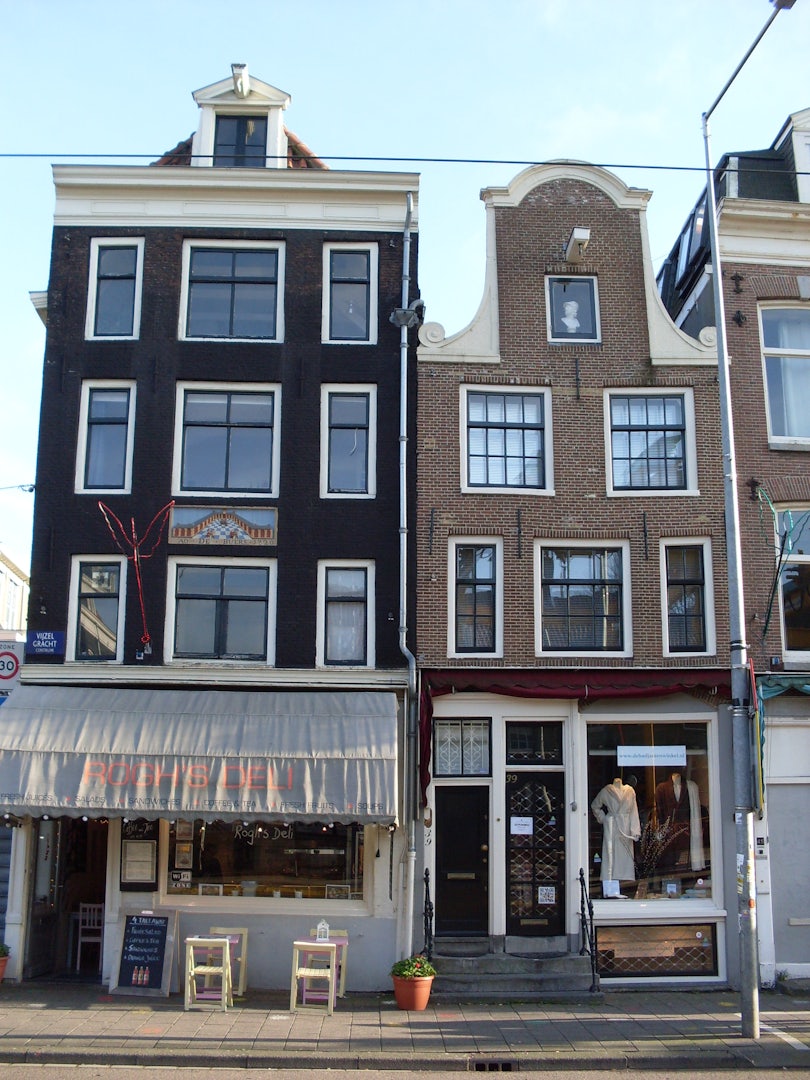
2) Sluyswacht
This very crooked free-standing house was built in 1695 as the lockkeeper’s house, opposite the Rembrandt House museum. One of the oldest pictures of this lock was painted by Rembrandt when he still lived across from it. In the last twenty years Sluyswacht has been a cafe.
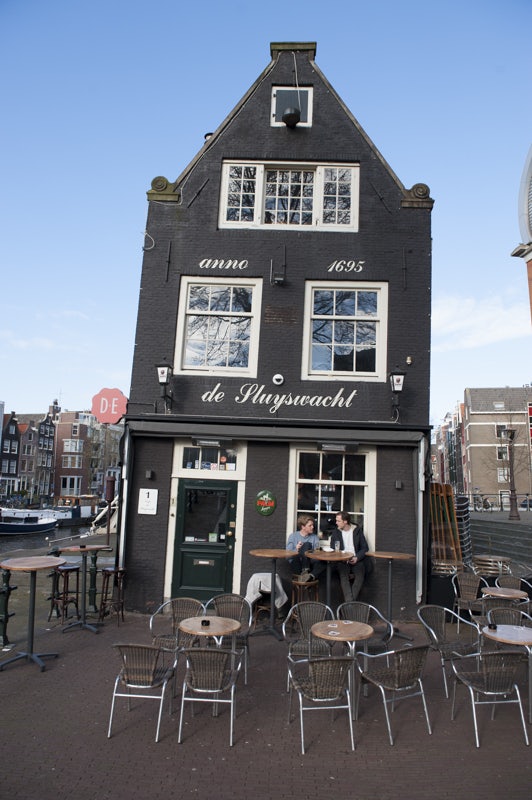
More hidden secrets of Amsterdam?
Explore the city off the beaten track with this guide packed with charming spots, hidden gems and fun facts about Amsterdam.
3) The Dancing Houses
There’s almost something comical about the way these houses seem to lean into one another. However, their crooked stance is a tell-tale sign that the marshy ground these monuments were built on isn’t all that stable. The wooden beams that support them have a mind of their own.
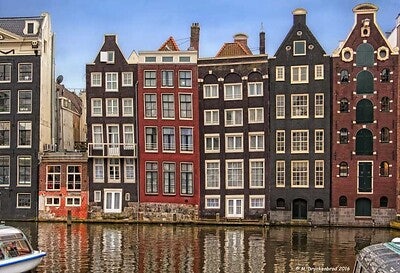
Ⓒ Mike Druckenbrod
4) Rokin
The buildings on Rokin used to be near the water, but this last section of the Amstel River was drained in the 1930s. A Persian rug store and an art dealer were initially located here. In 2003 the building was vacant and was squatted twice in a year. It has since been renovated, but has retained its distinctly crooked shape.
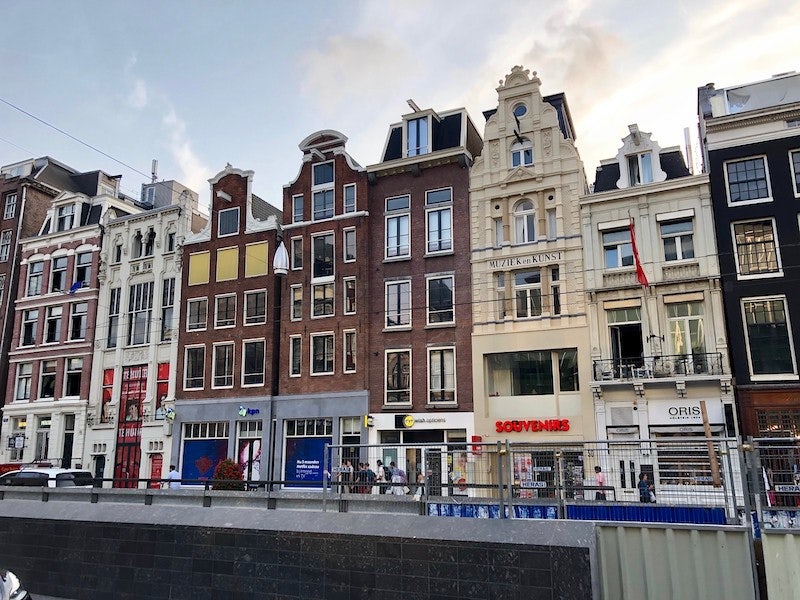
5) Spiegelgracht
This tiny house with its clock gable comfortably rests on its neighbour. The 17th-century Spiegelgracht, a canal opposite the Rijksmuseum, is lined with galleries, art shops and jewelleries, and has several crooked houses. Canal houses often leaned forward so their façades wouldn’t be damaged when hoisting goods up into the attic.
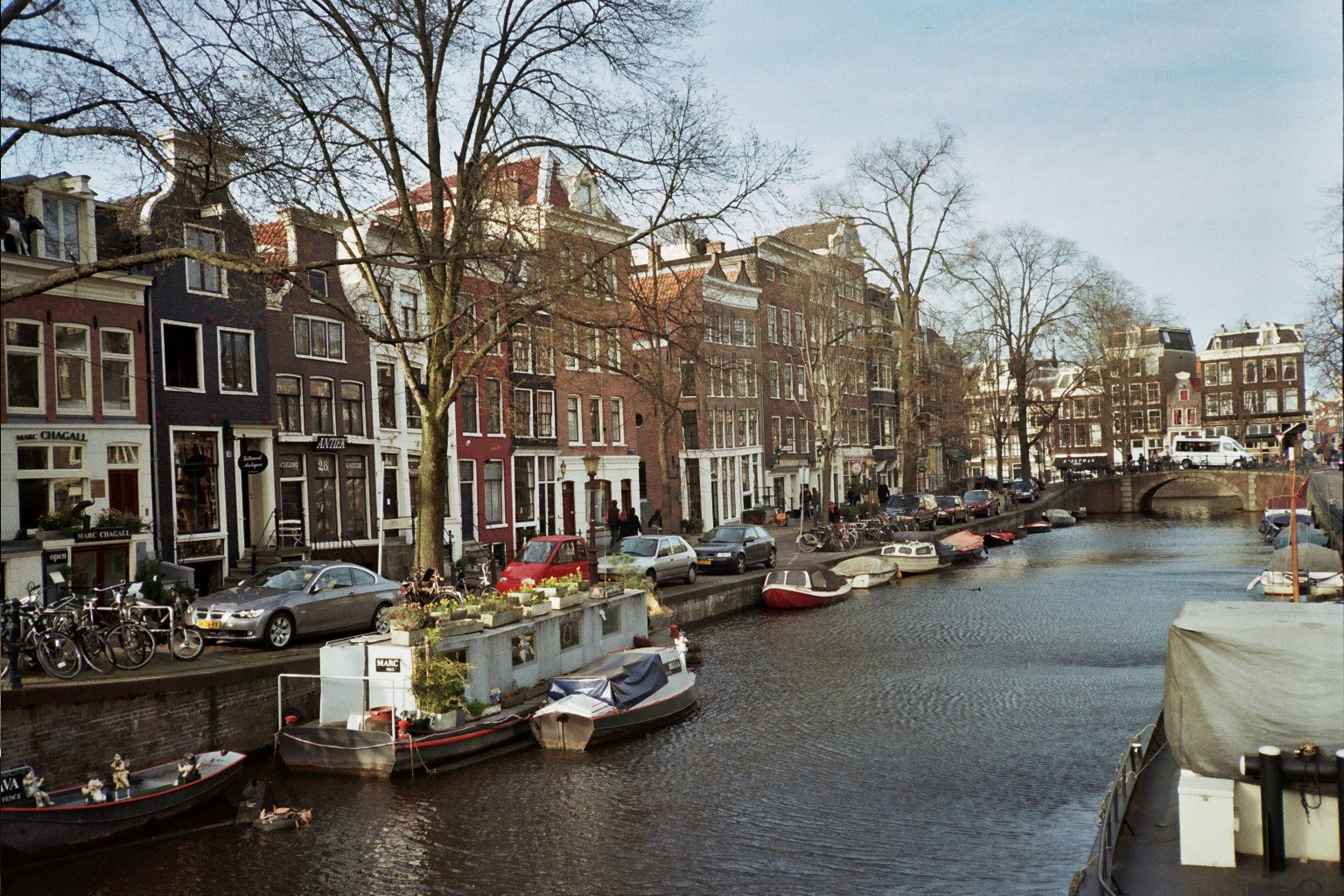
More hidden secrets of Amsterdam?
Explore the city off the beaten track with this guide packed with charming spots, hidden gems and fun facts about Amsterdam.
JOIN THE HIDDEN SECRETS SOCIETY
Unlock a world of hidden gems. Sign up for free and gain access to over 4,000 addresses on our website. Plus, enjoy a 10% discount on all print guides and ebooks. Start exploring today!
Already a member? Log in. |
New here? Sign up. |